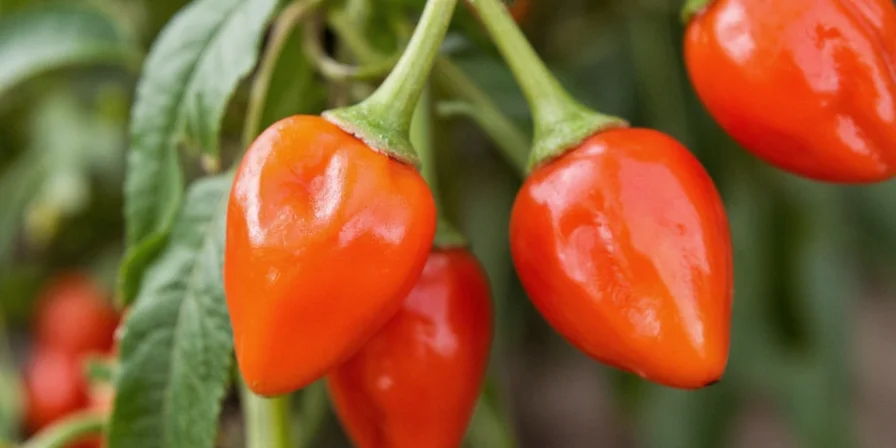Bird’s Eye Chile: A Fiery Little Powerhouse You Can’t Ignore!
Table of Contents
- What Exactly Is Bird’s Eye Chile?
- Heat Level: Don’t Let Size Fool You
- Flavor Profile: More Than Just Fire
- How to Use It in Cooking
- Growing Your Own at Home
- Substitutes: When Bird’s Eye Isn’t Available
- Storing Like a Pro
- Common Myths Busted
- Conclusion
What Exactly Is Bird’s Eye Chile?
The bird’s eye chile, known by many names like kanthari, prik kee noo, or simply “bird pepper,” is one tiny fireball that punches way above its weight class. Native to Southeast Asia, Africa, and parts of South America, this chile has been spicing up dishes for centuries.
If you’ve ever tasted a Thai curry and felt like your mouth was on fire (in the best possible way), there’s a good chance bird’s eye chile was the culprit. But don’t be fooled by its size—this little guy means business!
Heat Level: Don’t Let Size Fool You
Let’s get straight to it—the bird’s eye chile is HOT. On the Scoville scale, which measures the heat of chiles, it ranges between 50,000–100,000 SHU. To put that into perspective:
| Chile Type | Scoville Heat Units (SHU) |
|---|---|
| Jalapeño | 2,500–8,000 |
| Bird’s Eye | 50,000–100,000 |
| Habanero | 100,000–350,000 |
| Ghost Pepper | ~1,000,000 |
So while bird’s eye isn’t ghost pepper-level crazy, it definitely brings the heat. One fun fact: birds can eat them without feeling a thing—they lack the pain receptors we humans have!
Flavor Profile: More Than Just Fire
Yes, it’s hot—but the bird’s eye chile also brings a ton of flavor to the table. It has a sharp, peppery bite with hints of citrus and earthiness. In Thai cuisine, it’s often used raw or dried to add both heat and complexity.
Chef Tip: Don’t just use it for heat—think of it as a flavor enhancer that happens to be fiery. That’s why it’s so popular in salsas, curries, and marinades.
How to Use It in Cooking
Here are five genius ways to use bird’s eye chile like a pro:
- Raw in Salsas: Dice finely and mix into fresh tomato salsa or green mango relish.
- In Curry Pastes: Blend with garlic, lemongrass, and shrimp paste for an authentic Thai red or green curry base.
- Fried Dishes: Toss whole or sliced into pad kra pao (Thai basil pork) for extra kick.
- Pickled: Make a quick pickle in vinegar and sugar to mellow the heat while preserving flavor.
- Oil Infusion: Infuse oil with dried bird’s eyes for a spicy drizzle on noodles or grilled meat.

Growing Your Own at Home
Want to grow your own stash? The bird’s eye chile is actually a pretty resilient plant. Here’s how to do it right:
- Sunlight: Full sun all day long (at least 6 hours).
- Soil: Well-draining soil with plenty of compost.
- Watering: Keep moist but not soggy. Overwatering = sad peppers.
- Climate: Warm climates only! If you live somewhere cold, bring them indoors in winter.
- Harvesting: Pick when bright red for maximum spice, or green for a milder flavor.
Substitutes: When Bird’s Eye Isn’t Available
Can’t find bird’s eye chile at your local market? No worries—here are some worthy alternatives:
| Substitute | Heat Level | Best For |
|---|---|---|
| Serrano Pepper | 10,000–23,000 SHU | Salsas, pickling, or milder dishes |
| Thai Chili | 50,000–100,000 SHU | Curries, stir-fries, and pastes |
| Pequin Pepper | 30,000–60,000 SHU | Dried spice blends and sauces |
Storing Like a Pro
Got a bumper crop and don’t want your precious bird’s eyes to go bad? Here’s how to store them properly:
- Fresh: Store in a paper bag in the fridge for up to two weeks.
- Freeze: Wash, dry, and freeze whole in a ziplock bag. Great for throwing into soups or stews later.
- Dry: String them up in a sunny, airy spot or use a dehydrator. Once dried, grind into powder or store whole.
- Make Oil or Vinegar: Infuse bird’s eye into chili oil or vinegar for shelf-stable flavor bombs.
Common Myths Busted
Time to set the record straight on some common misconceptions:
- Myth: Smaller chiles are always hotter.
Fact: Size doesn’t equal spice. Weather, soil, and maturity play a bigger role. - Myth: Eating bird’s eye damages your stomach.
Fact: Capsaicin may actually help digestion and reduce inflammation. - Myth: Removing seeds makes them less spicy.
Fact: Seeds carry flavor, but the placenta (white inner ribs) hold most of the capsaicin.
Conclusion
There you have it—the ultimate guide to bird’s eye chile! Whether you’re a hardcore chile head or a curious foodie, this little dynamo deserves a place in your kitchen. From its explosive heat to complex flavor and surprising health benefits, the bird’s eye chile is more than just a spicy kick—it’s a culinary staple.
Now go forth, experiment, and remember: respect the bird’s eye. It might be small, but it’s got heart… and a lot of capsaicin.











 浙公网安备
33010002000092号
浙公网安备
33010002000092号 浙B2-20120091-4
浙B2-20120091-4